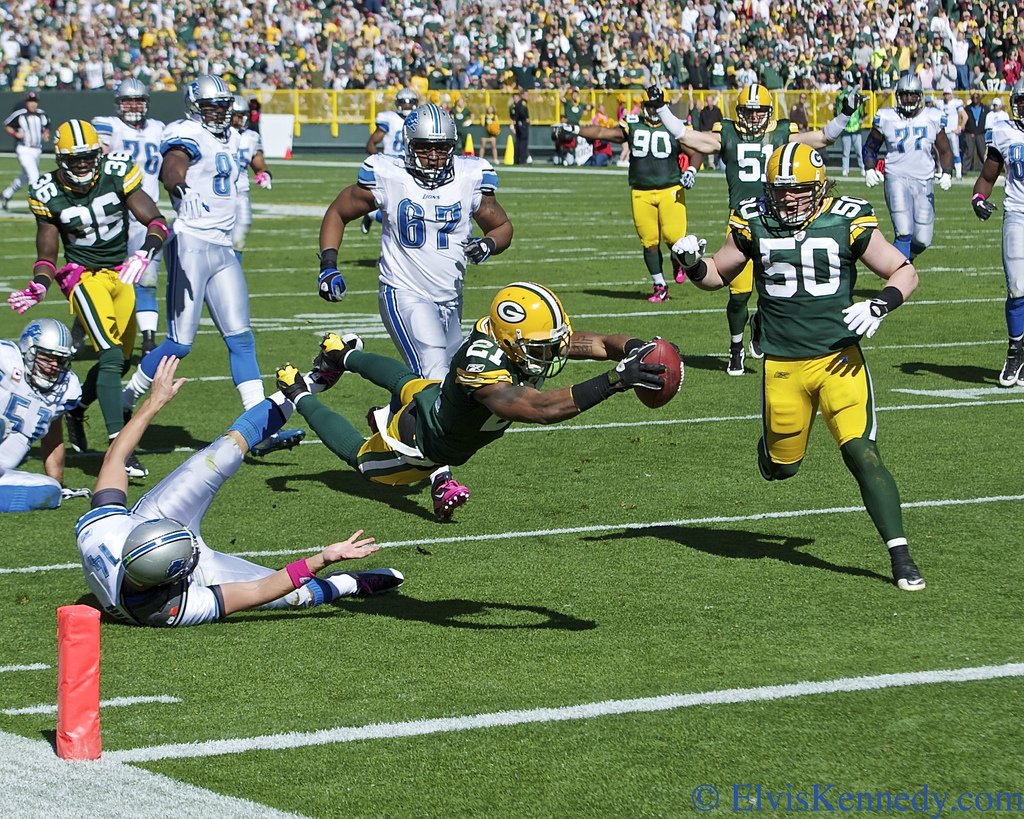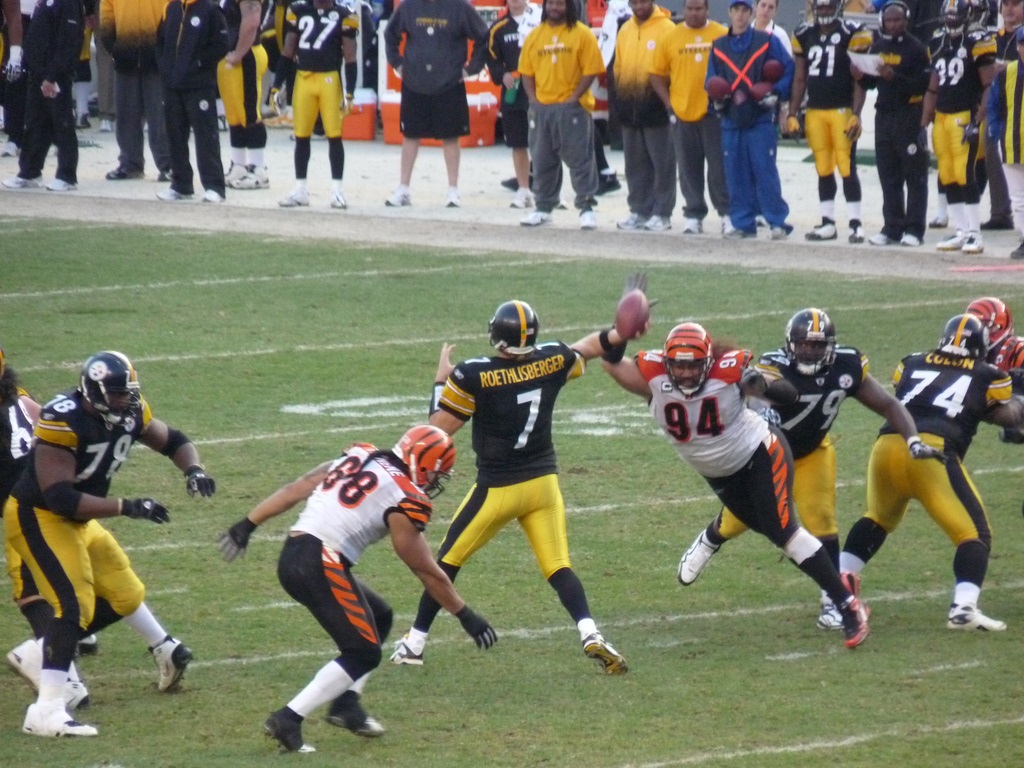
By Cian Fahey, Pre Snap Reads
Editor’s Note: A game I’ve been playing in my head in recent months is to take an offensive player and find his mirror image on the opposite side of the line of scrimmage. For example, Joey Galloway and Darrell Green were stylistically mirror images of each other. Both had amazing speed that sometimes overshadowed their underrated displays of craft at their respective positions over the course of lengthy and productive careers. Now I’m putting it on the blog and having some of my friends play.
It’s no secret that everyone loves superstars. Even as kids we’re brought up to worship the superstars on our father’s favorite team. Instead of getting jerseys with the name of the long-snapper or the punter, we get the quarterback or running back’s jersey. Our eyes naturally follow the football, so it makes sense that we would naturally follow the guys who are carrying it.
More than maybe any other sport, football emphasizes the importance of those without the ball. Everyone has some level of association with the ball or puck in soccer, baseball, hockey and basketball, but in football there is a different breed of talent on the field from week-to-week. In football, some of the most important players on each snap are players who don’t touch the ball. There are even some who will never touch it even once during careers that span more than a decade, yet those same players can make it to the hall-of-fame.
Often, it’s those guys who are actually more interesting than the superstars. Although, that may be just because there is a certain niche to appreciating what a guy like Vonta Leach or Red Bryant does from play to play.
Leach you will likely know. He was recently released by the Baltimore Ravens after a few seasons of excellent lead blocking for Ray Rice. Leach is by far the best run-blocking fullback in the NFL and his consistency playing to an elite level is simply outstanding.
Yet, he was just released? Released by one of the most well-respected general managers in the NFL? That doesn’t really make sense on the onset. Leach is the Aaron Rodgers of fullbacks, him being released is the fullback equivalent of the Green Bay Packers releasing their star quarterback?
This is the negative side of being a superstar. The shadow it casts over the reputations of those who don’t get the same headlines. Being a superstar isn’t really about being a good player, it’s more about your reputation. That’s not to say that Aaron Rodgers isn’t both elite and a superstar, but rather to point out that Vonta Leach can still be elite and not a superstar.

Leach was released, primarily for financial reasons and because they like one of their younger players who is also cheaper. However, Leach being released is more about the positional value of the role he plays. He and Red Bryant aren’t superstars because of the era they play football in. Both are elite pieces either for or against the running game. As I’ve already said Leach is the best run-blocker in the NFL, he punishes tacklers and keeps them away from the back he is chauffeuring, but Bryant is there to counter that by swallowing up offensive linemen.
Bryant is the rare run-stuffing 4-3 defensive end specialist who is still a starter. Unlike a Demarcus Ware or Von Miller, Bryant doesn’t get sacks, he has two in his whole career, he doesn’t fit the mold of your expectations for an orthodox edge-defender in today’s game(a Jason Pierre-Paul or Aldon Smith type). Instead, Bryant is a former defensive tackle who didn’t look to lose weight when he moved from the interior of the offensive line to the edge.
You see, Bryant and Demarcus Ware actually have a lot more in common than one would think. They are polar opposites, but both are specialists in their crafts. While Ware is racking up sacks, Bryant is shutting down rushing attempts to his side of the field on almost every single snap. Both beat double teams, but for different reasons and both are elite players, even though only one is a superstar.
Leach and Bryant are decidedly unsexy. At least, according to the accepted definition of sexy they are. Yet, there is nothing sexier than winning and both players contribute massively to their team’s success with their outstanding levels of play. Not to mention, both players have that intimidating level of toughness that helps them create an aura of leadership on the field.
Because this is an era of football when passing records are falling faster than the quarterbacks of the 2012 rookie class, Vonta Leach can be cut by a Super Bowl winning team and Red Bryant will never get the credit he deserves from the mainstream media despite the growing clout of his Seahawks. In a way, both must feel like Amish electricians, they can be as talented as they like, but job security and mass appreciation is always going to be a pipe-dream.
You won’t see many fans in Red Bryant or Vonta Leach jerseys off the field, but you won’t see many players who play in their style or to their level of class on the field either.











































